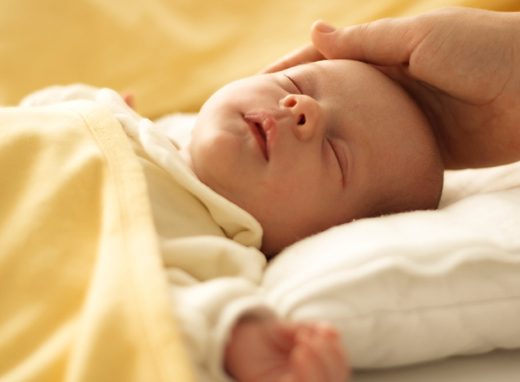Research
June 24, 2011
The mystery of stillbirths

Early results from the stillbirth study indicate that waiting longer between a stillbirth delivery and the next pregnancy may improve outcomes for mothers and infants
National study identifies potential causes
By Martha Nolan McKenzie
Each year in the United States, some 26,000 pregnancies end in stillbirth. Despite this daunting statistic, the causes of these tragedies largely remain a mystery.
"It's a very under-recognized issue," says Carol Hogue, director of the Women's and Children's Center at Rollins School of Public Health.
That is beginning to change. Hogue and other scientists have begun to uncover clues in the largest population-based controlled case study of stillbirths to date. The RSPH is one of five clinical sites in the Stillbirth Collaborative Research Network, funded by the National Institute of Child Health and Human Development. Over three years, the study enrolled more than 650 women who had stillbirths, defined as fetal deaths at 20 weeks of gestation or greater, and almost 2,000 controls, or women who gave birth to live babies. Both groups underwent a litany of tests: a placental exam by a pediatric pathologist, a maternal interview, a DNA study, review of their medical records, and an autopsy in cases of stillbirth.
The sites finished their data collection in 2009 and now are analyzing their vast findings.
"There have been very few studies on stillbirths, so everything we learn is new and potentially very useful," says Hogue, who co-leads the study with Barbara Stoll, chair of pediatrics in the School of Medicine and president and CEO of Emory-Children's Center. "We've barely begun to scratch the surface, but we've already discovered quite a bit."
Identifying key risk factors

Carol Hogue at Rollins and Barbara Stoll in the School of Medicine co-lead the Emory site for the Stillbirth Collaborative Research Network. The national study shows promising results to help more women have successful pregnancies.
One significant finding emerged from development of the study protocols.
"It's very hard to autopsy fetuses, and many pathologists don't know how to do it," says Hogue. "We developed protocols for examining fetal tissues. They will be published, and people already are using them to better understand the causes of stillbirth."
The study also identified several risk factors for stillbirth, some fairly intuitive and others surprising. The strongest risk factor for stillbirths is a prior stillbirth, and the timing of the next pregnancy can exacerbate that risk. Women tend to get pregnant very quickly after suffering a stillbirth, and a short time between pregnancies is associated with a poor outcome.
Maternal obesity was discovered to have a dose-response relationship with stillbirths—that is, the more obese the mother, the higher her likelihood of having a stillbirth. Also, the older the mother is, the greater her risk of stillbirth.
Perhaps one of the most unexpected findings was the role of blood type. Mothers with AB blood are at significantly higher risk for stillbirth than women with other blood types. "This has never been reported before, and we have no idea why this might be the case," says Hogue. "We need to study this further." Rh factor was not associated with stillbirth risk.
Genetic testing identified a copy pattern that signaled a heightened risk of stillbirth. Rather than missing a whole chromosome or having an extra one, pieces of a gene were copied over and over. This pattern is associated with autism, developmental delay, and other conditions. Some of these patterns were found in fetal tissue from stillbirths.
Additionally, researchers discovered that two screening tests used during the second trimester to identify birth defects may also predict stillbirths. Together, the tests for the hormone inhibin A (a high level may indicate Down syndrome) and the protein MSAFP (an abnormal level may indicate Down syndrome or a neural tube defect) "can also identify women whose pregnancies are at risk for stillbirth—possibly early enough to do something to prevent it," says Hogue.
Stress as culprit
The few previous studies on stillbirths have focused on problems during the pregnancy and delivery. Until now, none considered the relationship between a poor pregnancy outcome and the mother's environment.
Researchers identified a dose-response relationship between the number of stressful life events during the 12 months prior to delivery and stillbirth. Stressful life events included divorce or separation, a move to a new address, loss of a job, and hospitalization of a loved one, among others.
"If there were five or more stressful events, the woman was at twice the risk of stillbirth, after controlling for factors such as her age, race, ethnicity, education, and marital status," says Hogue. "Fewer than one in five women with stillbirths had no stressful events."
Hogue and her collaborators will be mining the data produced by the Stillbirth Collaborative Research Network for years to come, and what they find likely will make a real difference in women's lives.
"I've been in this field for 40 years and done many, many studies," says Hogue. "This is one of three studies in my career that will make a difference in the way we understand reproductive health."
This article originally appeared in Emory’s Spring 2011 Public Health magazine.